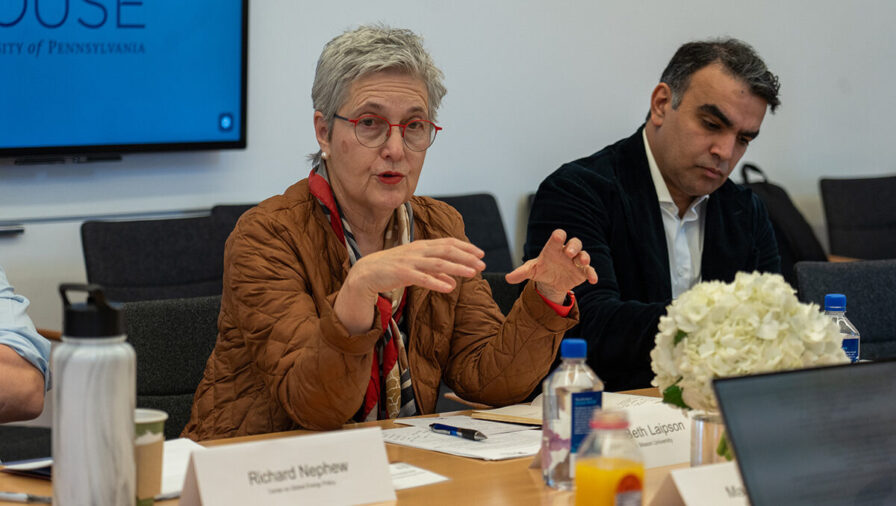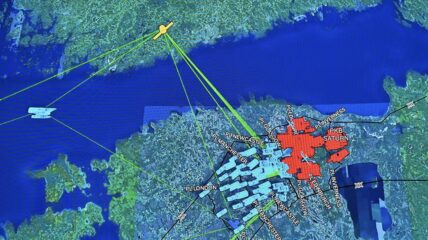This article is published as part of the Perry World House workshop “U.S.-Iran Relations Under Trump 2.0: Lessons Learned and Likely Scenarios.”
Introduction
Iran appears to be one of the countries President Trump has on his mind, as he sets his national security agenda in the second term. His approach seems to be still in formation, or, as has been the pattern in the past, he finds merit in not finalizing a policy to keep everyone guessing and to maximize his room to maneuver. He might like to be the change agent in this chronically troubled bilateral relationship, if it would accrue political or economic benefits to him, up to and including recognition of his role as a peacemaker.
Stating a few basic assumptions about Trump’s approach to international relations may be in order:
- He relies on instinct and some deeply held convictions about recent history, not on careful deliberations with policy experts. The main theme is America has been too generous to its allies, and it has to find a new balance in its relations with other countries.
- He prefers to work bilaterally, and disdains multilateral institutions and diplomatic approaches.
- He is a traditional nationalist in some respects, rather than an isolationist. He will assert American power mainly through economic and military coercion, but seems loathe to use military force, other than in discrete circumstances, such as recent air attacks on the Houthis in Yemen.
In February 2025, the president quickly reprieved his “maximum pressure” strategy on Iran from his first term in office. But he conveyed regret at imposing new sanctions, and offered to engage the leadership in Tehran, in the hopes of securing a new and improved version of the nuclear agreement signed by Iran and six major powers in 2015. That agreement, the Joint Comprehensive Plan of Action (JCPOA), has remained in effect despite the U.S. decision to withdraw from it in 2018, but several of its provisions will be phased out this year. In late March, Iran formally rejected Trump’s overture, declaring that direct talks were unacceptable under conditions of maximum pressure and military threats.
Tough Regional Environment
Iran is adapting to a regional environment that has changed in important ways since Trump’s first term in office. Iran has unquestionably suffered significant setbacks from Israel’s response to the deadly Hamas attack in October 2023. Whether Iran was witting or supportive of Hamas’ plans, the reality is that Israel has conducted a sustained lethal campaign against Hamas in Gaza and Iran’s primary regional partner, Hezbollah, in Lebanon. It has also asserted itself militarily in post-Assad Syria. So on three fronts, Iran’s partners in the axis of resistance against Israel have been severely degraded militarily and suffered extraordinary civilian and infrastructure losses. It would take many years for Iran to help its partners recover from this war on multiple fronts, and reporting suggests that each of the partners sees Iran as diminished and less relevant to their security.
On two occasions in 2024, Iran and Israel engaged in direct military confrontation, breaking a long-standing tacit agreement to avoid such an escalation. The reciprocal air and missile strikes raised the threat of a widened regional war, that did not materialize…at least as of March 2025.
Given the volatility caused by the war in Gaza, the economic stresses inside Iran, and the apparent interest of the Trump administration in a new approach to deal with Iran, it is useful to consider how Iran under its current leadership will cope with these pressures. One cannot rule out more upheaval and uncertainty facing the regime from domestic sources, which could then invite in external actors to try to influence the outcome. Is Iran willing to take more risks, as the missile attack on Israel suggests, or more likely to remain cautious, as the response to Trump’s overture implies? It is this continuum from avoiding change to asserting defiance or new risk tolerance that an analytic exercise should explore.
Analytic Challenges
The long absence of formal diplomatic relations between Washington and Tehran is one barrier to understanding how change might occur in Iran. In recent years, even experienced journalists who know the country well have avoided travel due to the frequency with which foreign visitors have been detained and imprisoned in the country. Émigré Iranians provide important insights, but may not enjoy easy access to today’s power centers, and politically active emigres are not always the best analysts of the current situation in the country. Iran still has some attributes of an open media and its highly educated population do try to get their views into the public domain. Nonetheless, a large dose of humility is required when attempting to speculate on Iran’s future.
“Black swans” is a catchphrase about efforts to imagine highly improbable events and their consequences in key countries, beyond the more logical, probabilistic methods often used in intelligence, industry and public policy analysis. Whether we are looking for plausible scenarios or pushing ourselves to imagine outlier events, we must start with reality and what we know to be true, and then methodologically layer on varying outside factors, gaps in our knowledge, and different ways to interpret known facts.
In 2000, at the National Intelligence Council, we launched a quadrennial report, Global Trends, that over a quarter-century has produced many unclassified studies about the future, with significant input from subject matter experts in and out of government around the world. Our efforts to imagine alternative paths through creating scenarios drew criticism, but scenarios are useful to contemplate to break us out of linear, conventional thought patterns and cognitive biases. They should not be considered to have much predictive value, but can be part of the policy process by pushing participants to think beyond the default position of incumbency and continuity.
- It’s time for fresh thinking about a post-Supreme Leader Iran; would the status quo system be retired in favor of a more collegial regime? On the one hand, Iran is a mature system that could well prove durable after Supreme Leader Ali Khamenei’s death, but systems change slowly and the drivers of change may not be visible from the outside. Alternatively, the Iranian system could collapse, with his death a trigger for pent-up societal and even system demand for change. Are there any alliances between nonreligious leaders and technocrats in the Iranian system that may work to reduce the power of the office of the supreme leader, with the goal of eliminating it?
- Change in Iran could well emerge from civil society, possibly from the existing Women Life Freedom movement; a massive civil society movement that would succeed because security forces refuse to fire on their fellow citizens (e.g., Egypt in 2011). Such a social movement could lead to an overhaul of the Iranian state-society contract, a moment when reformers achieve enough consensus to dramatically change the rules of the game and how power is distributed (e.g., Tunisia 2011). A key determinant would be if a credible, unifying figure emerges to lead the process.
- A climate scenario could also cause incredible stress to Iran, which is geographically deeply vulnerable. If the government is unable to provide relief in conditions of a catastrophic climate crisis, Iran could face a sustained political crisis. This is a case of systemic, versus regime, collapse. Imagine a failure of the basic infrastructure of the country: no access to electricity, clean water, etc.
- In scenarios with a geopolitical dimension, we begin with the assumption that Iran is already identified as a partner to Russia and China in opposition to the West. Should those parties overplay their hand in Iran, or should Tehran seek to deepen the influence of these authoritarian regimes with tools to monitor and control the population, there could well be a new form of resistance from Iranian society. Experts believe that a majority of Iranians, not only the urban educated, favor ties with the West, and wish their country would be respected and accepted by states with more liberal, democratic values. The regime could miscalculate and trigger the bottom-up dissent that it has faced intermittently over the years. With the leadership at the top more fragile, prospects for domestic unrest leading to a loss of control by the regime increase.



